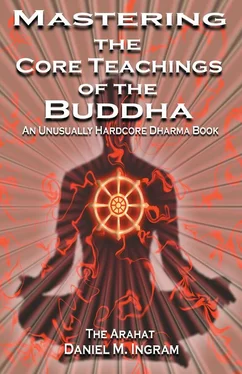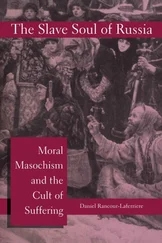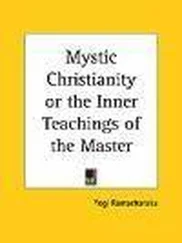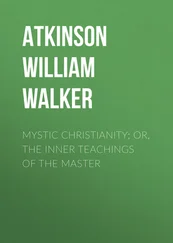Daniel Ingram - Mastering the Core Teachings of Buddha - An Unusually Hardcore Dharma Book
Здесь есть возможность читать онлайн «Daniel Ingram - Mastering the Core Teachings of Buddha - An Unusually Hardcore Dharma Book» весь текст электронной книги совершенно бесплатно (целиком полную версию без сокращений). В некоторых случаях можно слушать аудио, скачать через торрент в формате fb2 и присутствует краткое содержание. Год выпуска: 2009, ISBN: 2009, Издательство: Aeon Books, Жанр: Старинная литература, на русском языке. Описание произведения, (предисловие) а так же отзывы посетителей доступны на портале библиотеки ЛибКат.
- Название:Mastering the Core Teachings of Buddha - An Unusually Hardcore Dharma Book
- Автор:
- Издательство:Aeon Books
- Жанр:
- Год:2009
- ISBN:9781904658405
- Рейтинг книги:5 / 5. Голосов: 1
-
Избранное:Добавить в избранное
- Отзывы:
-
Ваша оценка:
- 100
- 1
- 2
- 3
- 4
- 5
Mastering the Core Teachings of Buddha - An Unusually Hardcore Dharma Book: краткое содержание, описание и аннотация
Предлагаем к чтению аннотацию, описание, краткое содержание или предисловие (зависит от того, что написал сам автор книги «Mastering the Core Teachings of Buddha - An Unusually Hardcore Dharma Book»). Если вы не нашли необходимую информацию о книге — напишите в комментариях, мы постараемся отыскать её.
Mastering the Core Teachings of Buddha - An Unusually Hardcore Dharma Book — читать онлайн бесплатно полную книгу (весь текст) целиком
Ниже представлен текст книги, разбитый по страницам. Система сохранения места последней прочитанной страницы, позволяет с удобством читать онлайн бесплатно книгу «Mastering the Core Teachings of Buddha - An Unusually Hardcore Dharma Book», без необходимости каждый раз заново искать на чём Вы остановились. Поставьте закладку, и сможете в любой момент перейти на страницу, на которой закончили чтение.
Интервал:
Закладка:
Models of the Stages of Enlightenment
“the bliss of Nirvana.” It is a more subtle understanding than the nirmanakaya and in some largely mysterious way does not contradict it.
Beyond even this, they also understand in real time what is meant by the dharmakaya, that somehow none of this is they, and that “what they are” cannot be fundamentally harmed, disturbed or affected by the world of phenomena in any way. The dharmakaya seems to
simultaneously pervade all of this, not be all of this, and be utterly beyond all of this. It seems to be permanent and yet unfindable, be empty and yet aware. Even this paradoxical language is hopelessly crude and from a certain point of view unnecessary, though an arahat would know directly what it is pointing to. This is what is meant by “going beyond birth and death,” “Samsara is Nirvana,” “the arahat is traceless here and now,” “True Self” and “no-self.” Interestingly, the nirmanakaya also relates directly to both “True Self” and “no-self.”
There is something beautiful and yet tragic in this, a “dark comedy” as a friend of mine put it.
To even say that the dharmakaya is a very subtle understanding makes no sense, as the understanding of dharmakaya arises more from what is absent rather than a sense of the presence of something. On the other hand, the presence of everything bears witness to it.
All three understandings (the nirmanakaya, the sambhogakaya, and the dharmakaya) are accessible to the arahat at any time by the mere inclination towards them, which is to say these perspectives arise dependent on causes in their own time. They are three complementary perspectives on the same thing. It is like being able to see the validity of the perspective of all of the three people in the classic Taoist painting called “The Vinegar Tasters,” with Confucius and his laws for living in the world relating to the nirmanakaya, Lao Tzu and his deep
appreciation of life relating to the sambhogakaya, and the Buddha and his emphasis on Nirvana and going beyond suffering, birth and death relating to the dharmakaya. Most people think of this painting as a Taoist slam on the other two traditions, but I think that the deeper meaning is much more useful.
The teaching of the Three Ultimate Dharmas of materiality,
mentality and Nibbana that I articulated earlier is closely related to the Tibetan concepts of the Three Kayas or aspects of the fully enlightened 312
Models of the Stages of Enlightenment condition. The nirmanakaya relates to form, the sambhogakaya relates to the enjoyable, quiet and spacious peace of the fully enlightened mind that unifies the mental and physical into the same field of experience, and the dharmakaya relates to Nibbana.
Were only the nirmanakaya true, we could say that unitive
experiences are the answer and that we are the whole field of experience. Were only the dharmakaya true, we could say that transcendent “experiences” are the answer, that we create and know the whole field of experience, that we do not exist, and that we are the deathless or God. Neither of these frameworks can clearly explain things on their own, and so, as mentioned in the chapter called No-self vs. True Self, none of these descriptions really holds up to reality testing on its own.
Presenting the Three Kayas also allows me to continue to hammer relentlessly on the point about people wanting to find some spiritual reality other than this one. The huge temptation when walking the spiritual path is to try desperately to find a way to get the simple ease of the sambhogakaya and the indestructible, transcendent and deathless luminosity of the dharmakaya while secretly hoping that the down to earth, mundane, intimate, visceral, vulnerable, and often embarrassing nirmanakaya will just sort of crawl away and die or at least radically reform itself. The nirmanakaya is often treated as though it were the bastard stepchild of the fully enlightened condition, but you can’t have one without the others. Intimacy with reality is bought at the price of attaining transcendence beyond reality. Transcendence is bought at the price of attaining intimacy with reality. These inescapable facts should not be forgotten.
The all too common temptation of those who advertise and sell spirituality is to sing the praises of the sambhogakaya and dharmakaya while trying to gloss over the profound yet down to earth implications of the nirmanakaya. Buyer beware! If enlightened beings didn’t feel the fullness of their humanity and the ordinary world, compassion for themselves and others would be completely impossible. From a Tibetan point of view, it is because enlightened beings progressively lose their artificial defenses against the nirmanakaya that they have no choice but to be bodhisattvas, which brings us nicely to our next model…
313
Models of the Stages of Enlightenment
THE IMMORTALITY MODELS
The Immortality Models are significantly more prevalent in Tibetan Buddhism than the other strains, thought they also appear in Pure Land Buddhism and are found elsewhere. While all strains of Buddhism on the one hand categorically deny immortality as the goal based upon the standard tenants of Buddhist logic, plenty then turn around and sell immortality like used car salesmen. So many Buddhists want to be up in the Heaven called Nirvana as empty yet separate beings who don’t exist and yet live forever as Bodhisattvas saving the world.
While there are lots of good points in the Bodhisattva Vows, this is yet another case of bait and switch where the results will be a bit more down to earth than most people are bargaining for. However, many Buddhists are so brainwashed into the ideal of becoming Amazing Super Beings that they readily give up the notion that they could really understand anything in this lifetime in exchange for the dream that some zillion lifetimes down the road they may get to be Spiritual Superstars. However, as their mentality can be essentially like people who have bought into some weird cult, I don’t recommend trying to convince them otherwise, as it generally just pisses them off. Just do your practice, take care of your own understanding, and then see what you can do from there.
Now, as before, there is some weird truth to the immortality models on two fronts. First, from a technical point of view, what is traditionally called the Dharmakaya, Deathless, Nirvana, Tao, Void, Buddha Nature, etc. is indestructible, timeless, etc., but this is because it is not anything specific. This has already been discussed, and simply stated, from this point of view the notion of death or impermanence simply does not apply. The flip side of this, that of the ordinary, transient world, Nirmanakaya, etc., is that causality rings on indefinitely. This is an interesting way to look at things, and a very practical, insight-oriented way.
From the point of view of time, cause and effect, things ripple out into the universe like drops of water cause ripples in water. This process, that is to say the world and us, has always been empty. If we are anything, it is a pattern of rippling sensations arising from causes and effects and leading to causes and effects. Thus, we send ripples of 314
Models of the Stages of Enlightenment whatever and however we are out into the causal future. If we are enlightened, that is one aspect of what ripples out into the patterns we call time, and these ripples go on without definable end. Teachings of reincarnation are getting at this point in their somewhat problematic way. Thus, we see that there is something to the Immortality Models, but they are not very helpful for doing insight practices except to help one appreciate causality. I think they are much more useful for training in morality, despite their obvious paradigmatic problems.
One great traditional analogy goes as follows: If you lit a candle, then lit another candle with that candle and then blew out the first one, what is transmitted? This is causality without a permanent entity, resonance without continuity, an artificial but useful recognition of a pattern, and nothing more.
Читать дальшеИнтервал:
Закладка:
Похожие книги на «Mastering the Core Teachings of Buddha - An Unusually Hardcore Dharma Book»
Представляем Вашему вниманию похожие книги на «Mastering the Core Teachings of Buddha - An Unusually Hardcore Dharma Book» списком для выбора. Мы отобрали схожую по названию и смыслу литературу в надежде предоставить читателям больше вариантов отыскать новые, интересные, ещё непрочитанные произведения.
Обсуждение, отзывы о книге «Mastering the Core Teachings of Buddha - An Unusually Hardcore Dharma Book» и просто собственные мнения читателей. Оставьте ваши комментарии, напишите, что Вы думаете о произведении, его смысле или главных героях. Укажите что конкретно понравилось, а что нет, и почему Вы так считаете.












